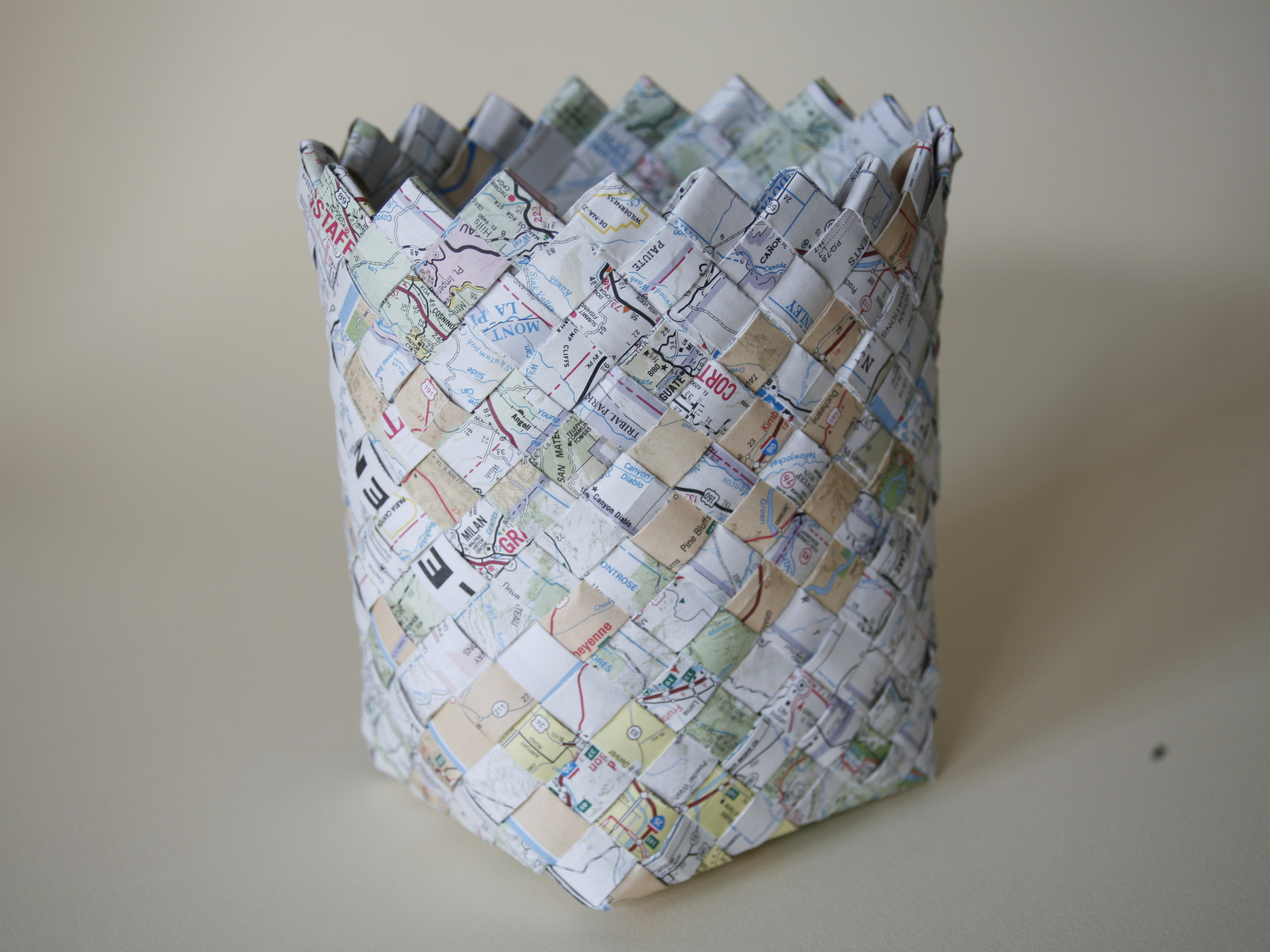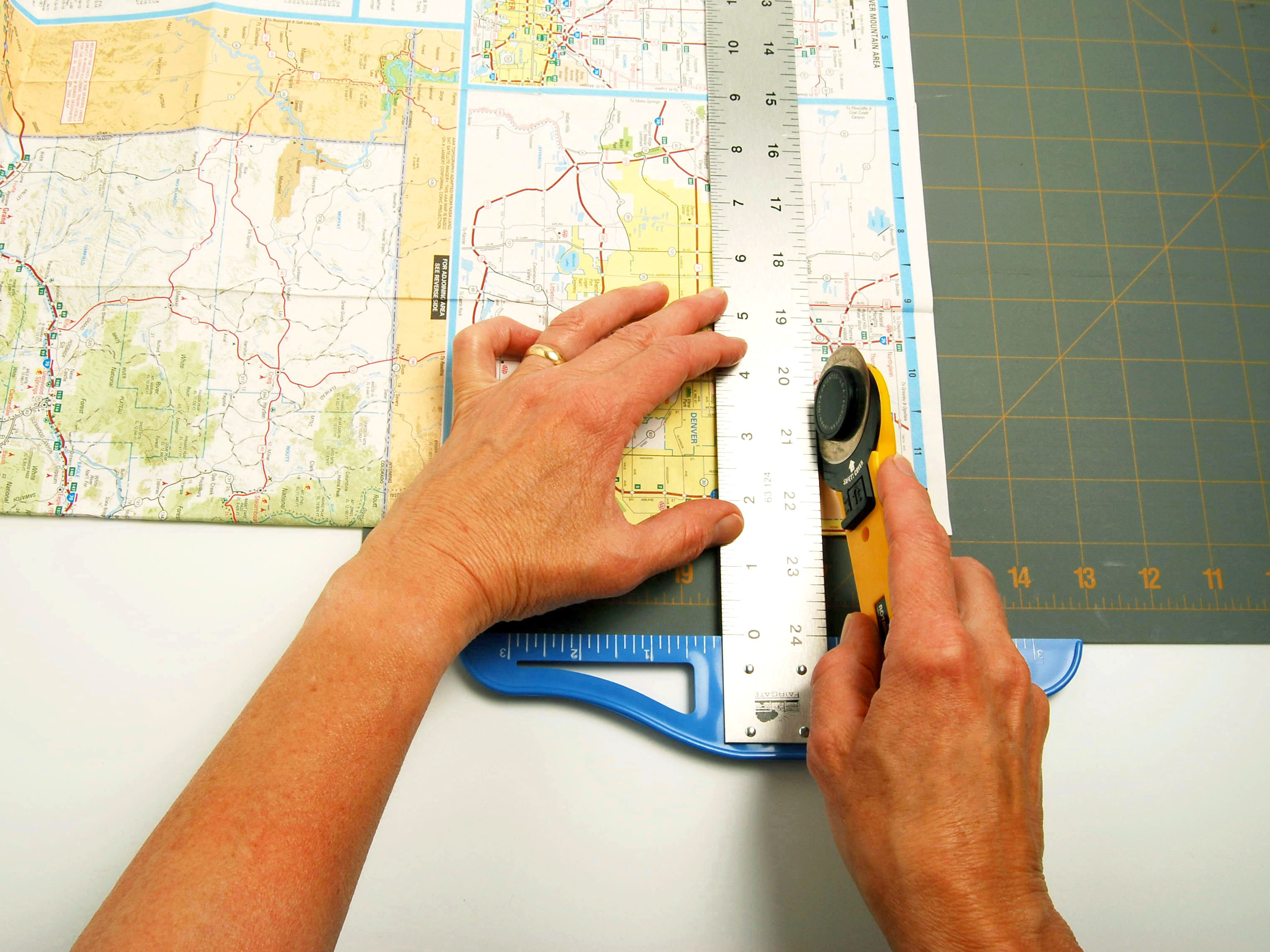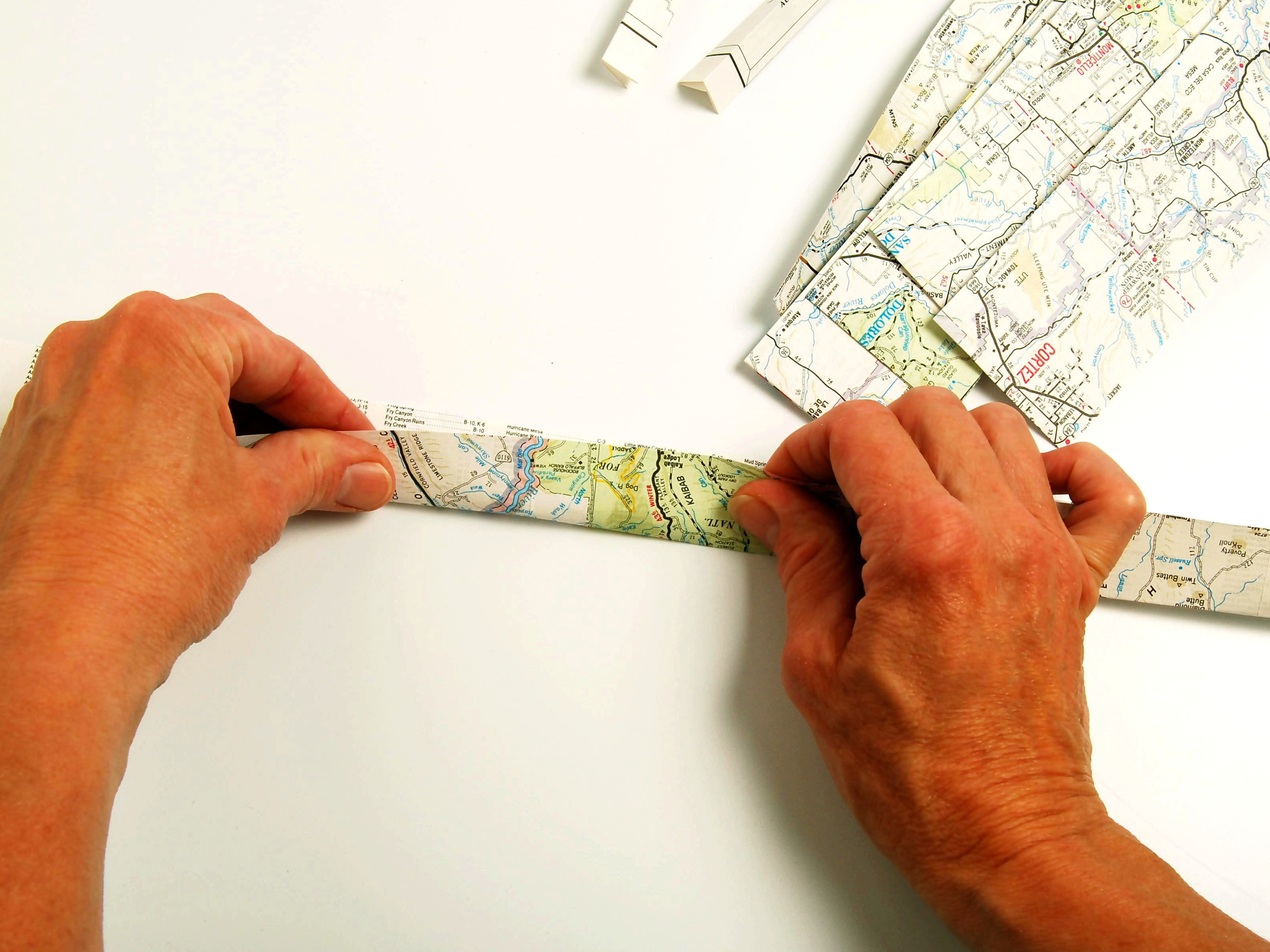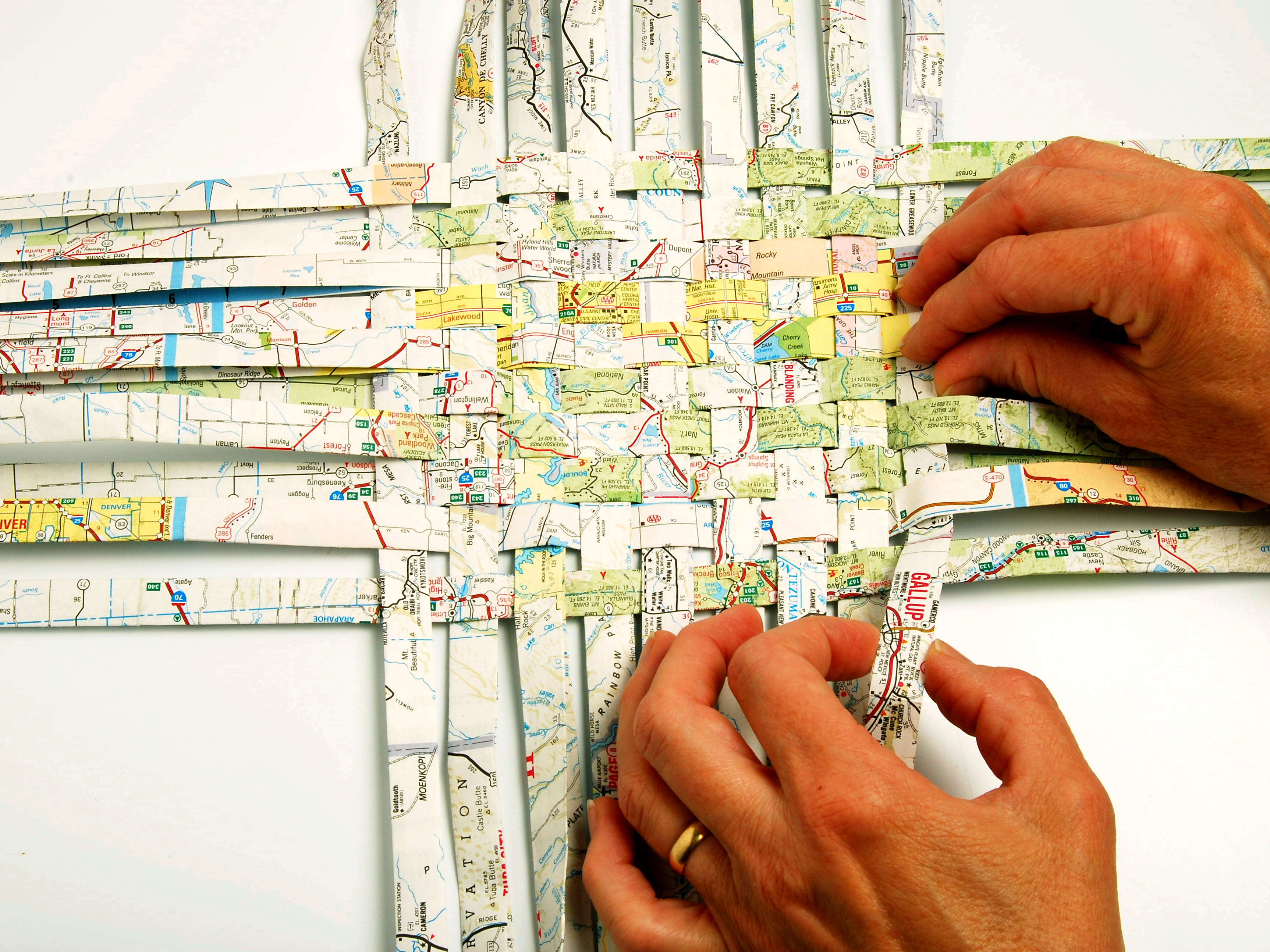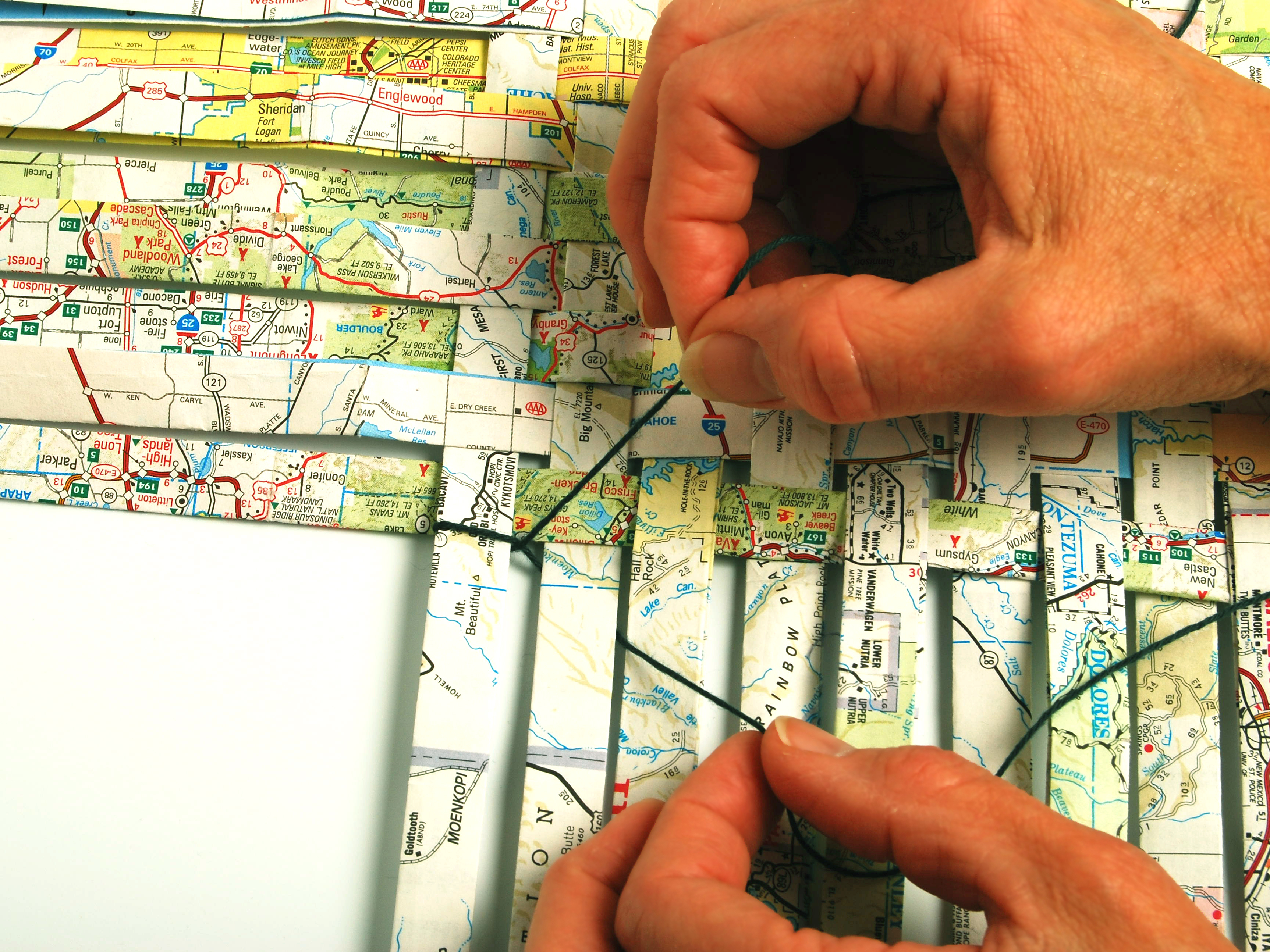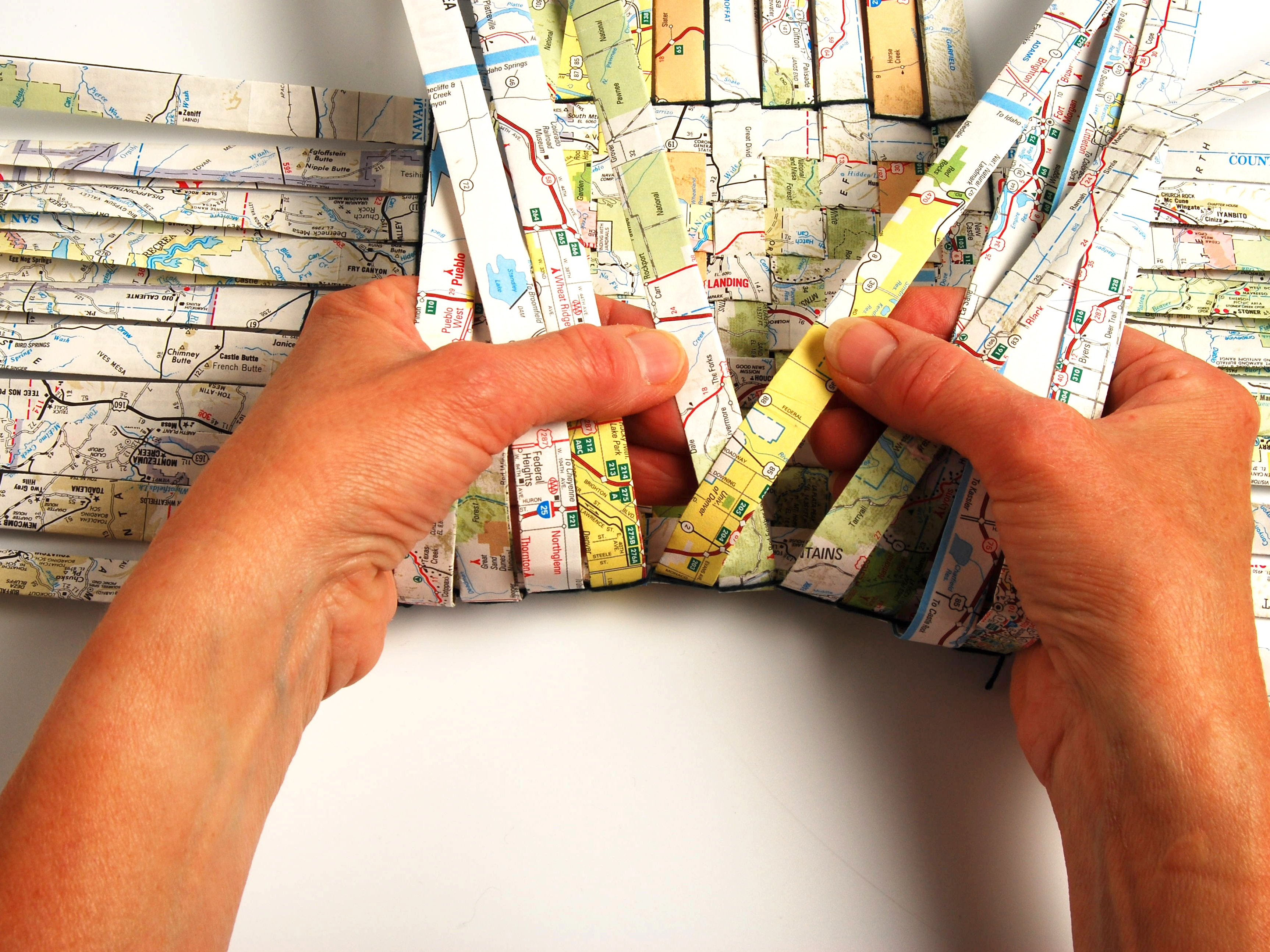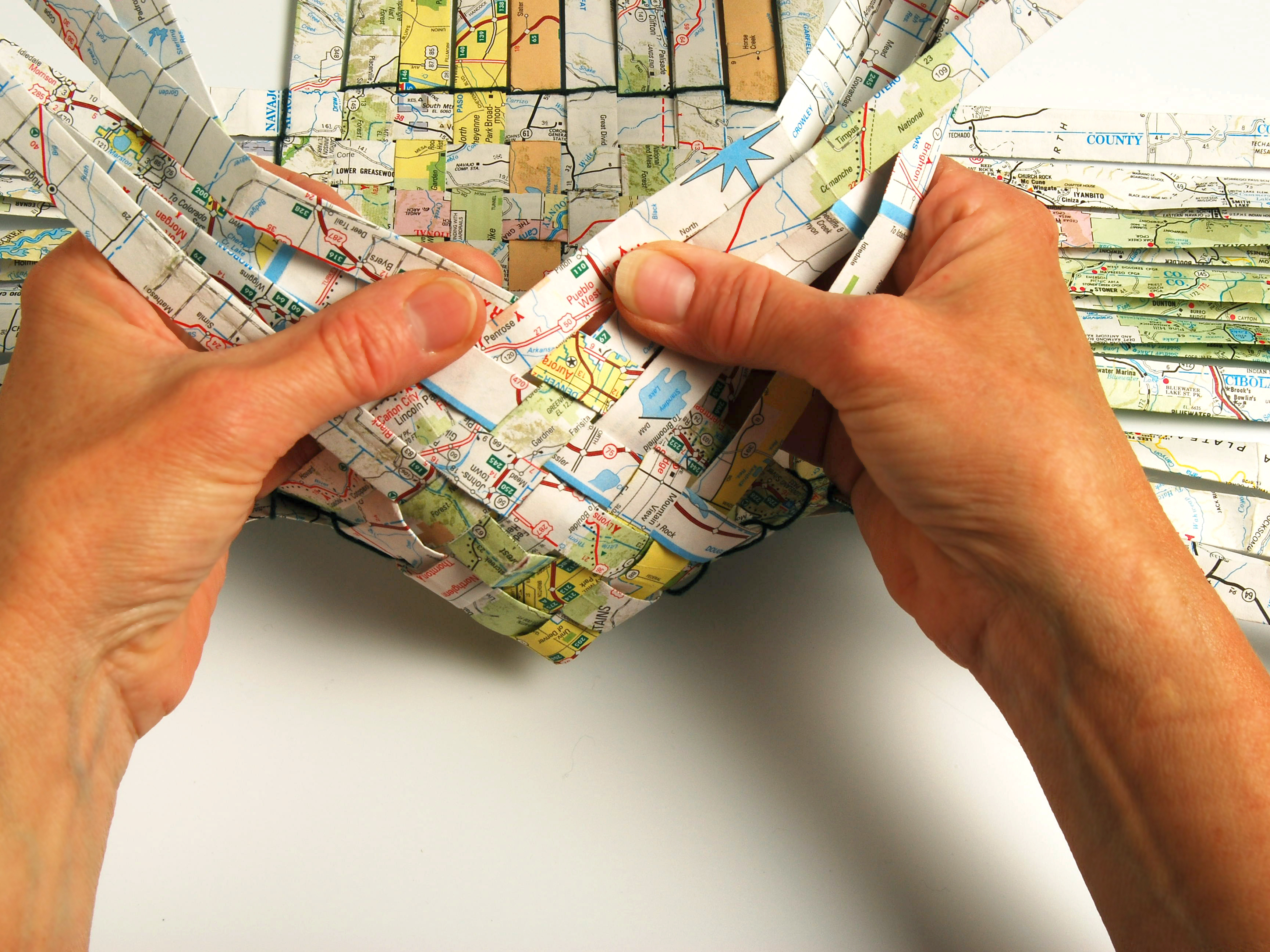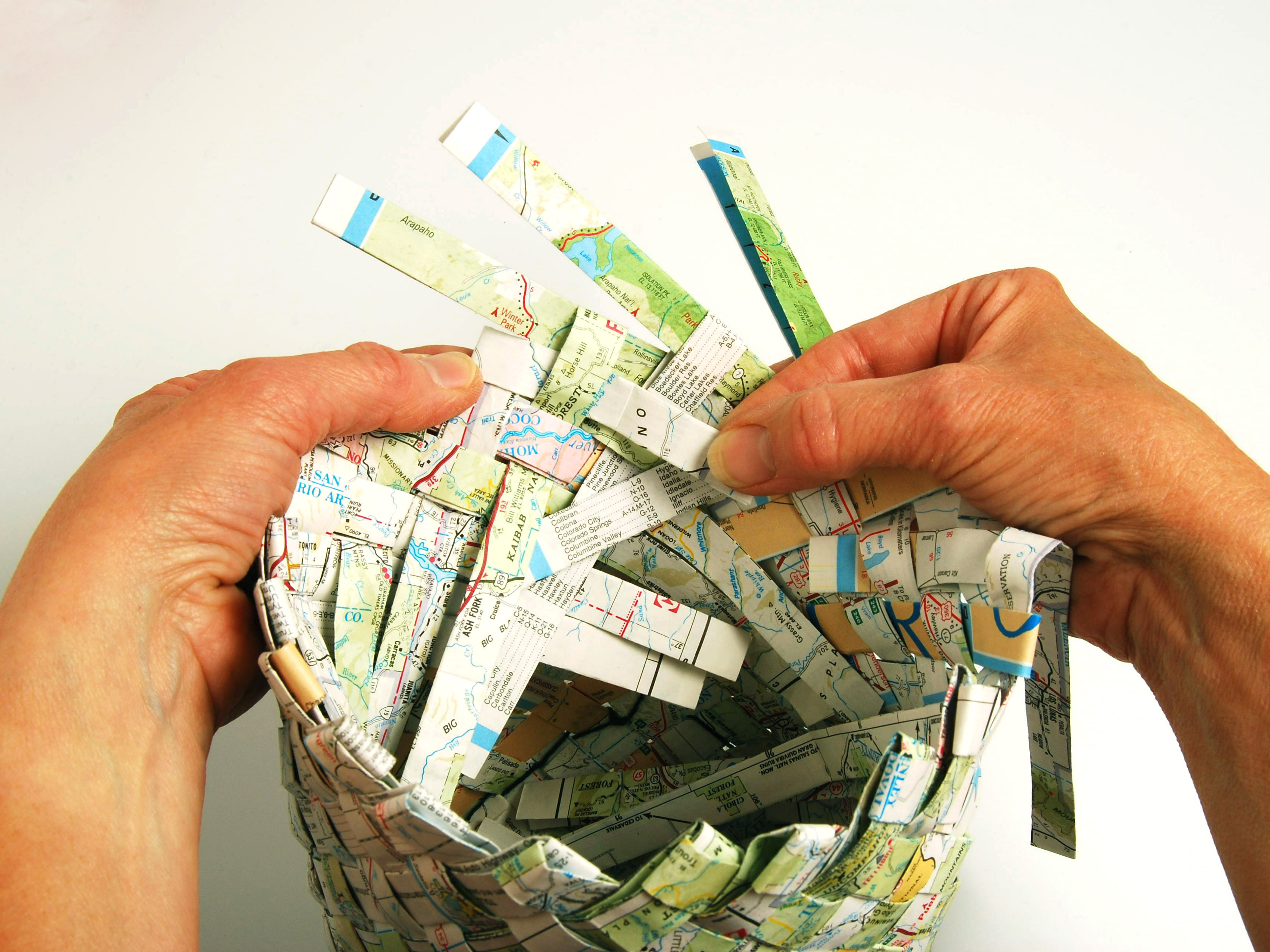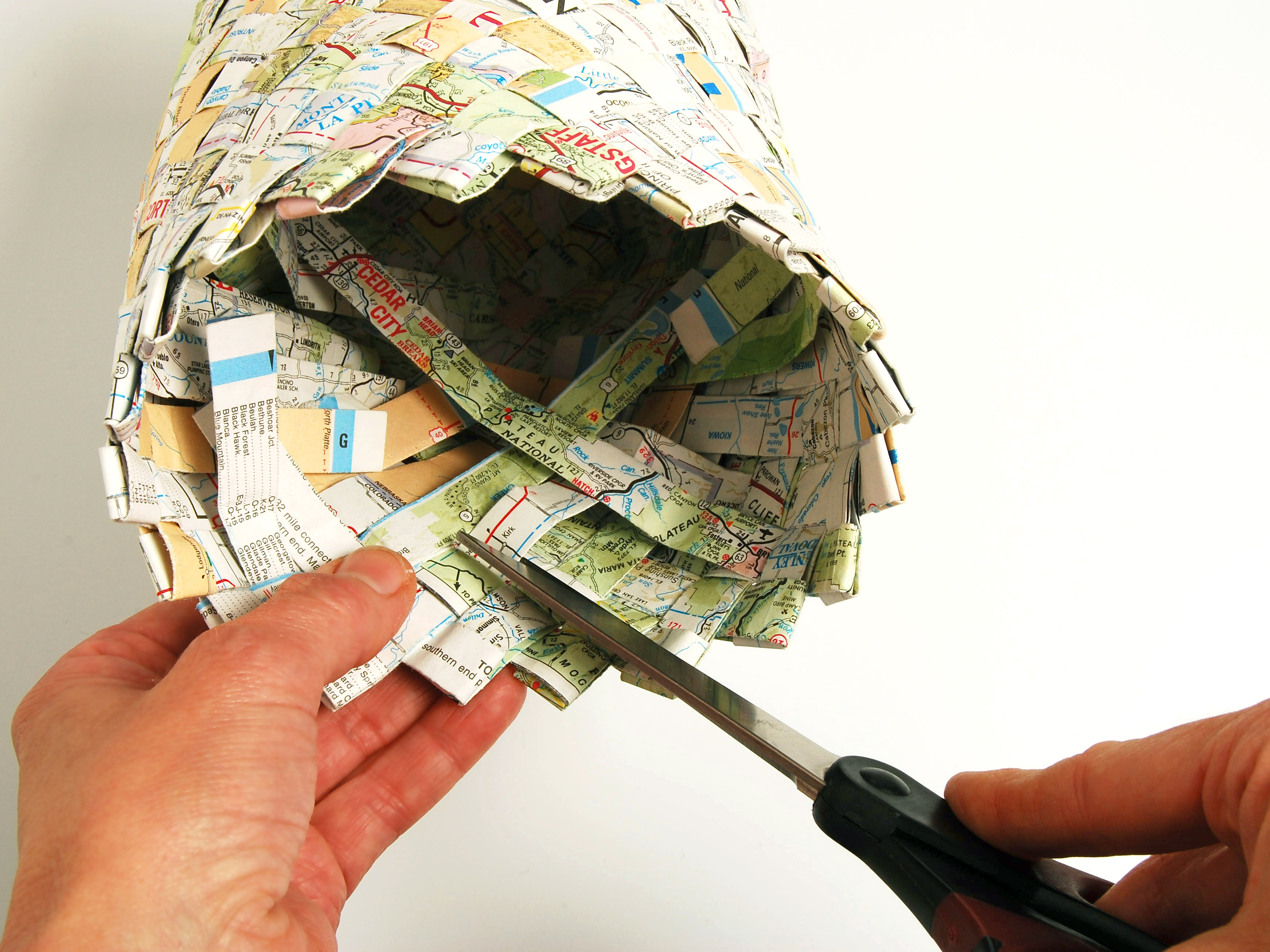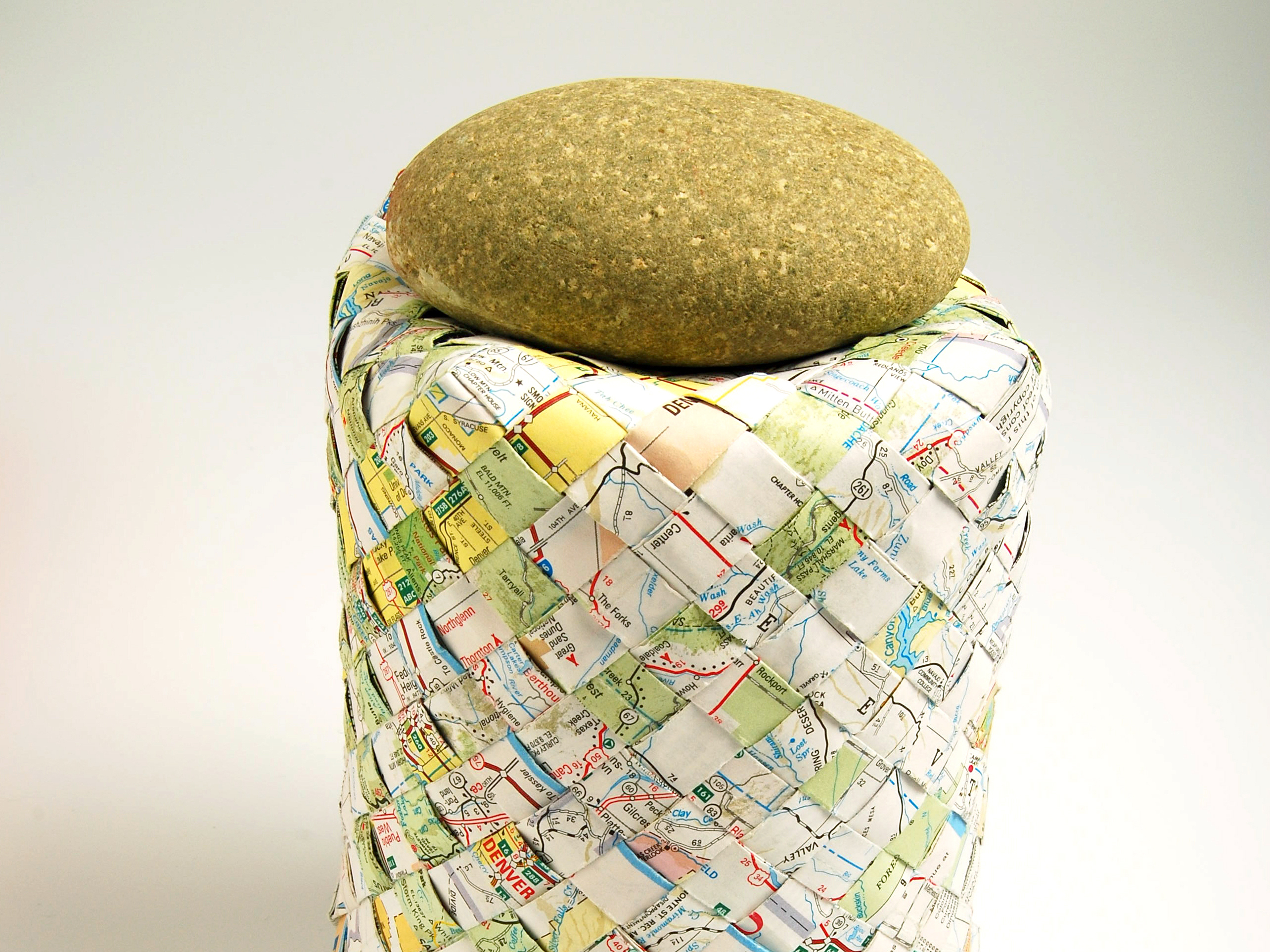Think of basketry as three-dimensional weaving. If you ever wove paper as a child, that’s the basis for this plaited basket. You begin by weaving a flat base, and then upturn the strips (called stakes or weavers) to make the sides, in what is referred to as bias plaiting. You’ll be surprised by how sturdy your paper basket will be.
Baskets can be called a true handcraft because almost any basket you’ll see anywhere in the world has been woven by hand. It’s one craft they just haven’t learned to make well by machine.
This project repurposes maps from your travels to weave a practical, attractive basket full of memories of trips taken and experiences had along the way.


